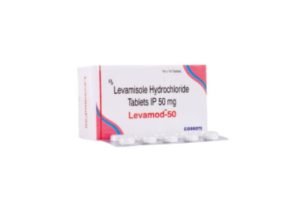
Tigecycline: Full Review
Tigecycline is a broad-spectrum antibiotic belonging to the glycylcycline class, a derivative of the tetracycline family. It is used to treat complicated infections caused by multidrug-resistant bacteria. Tigecycline is often reserved for serious infections where other antibiotics have failed due to resistance.
1. Mechanism of Action
Tigecycline works by inhibiting bacterial protein synthesis. It binds to the 30S ribosomal subunit of bacteria, preventing the attachment of aminoacyl-tRNA, thus blocking the incorporation of amino acids into the growing protein chain. This mechanism is similar to tetracyclines, but tigecycline has been modified to overcome certain bacterial resistance mechanisms, such as efflux pumps and ribosomal protection proteins. Tigecycline is bacteriostatic, meaning it inhibits bacterial growth rather than directly killing the bacteria.
2. Uses
Tigecycline is mainly used to treat serious bacterial infections, especially those involving multidrug-resistant organisms. It is approved for use in:
- Complicated skin and soft tissue infections (e.g., cellulitis, abscesses)
- Complicated intra-abdominal infections (e.g., peritonitis, intra-abdominal abscesses)
- Community-acquired bacterial pneumonia (CABP)
Tigecycline is effective against a wide range of Gram-positive and Gram-negative bacteria, including methicillin-resistant Staphylococcus aureus (MRSA), vancomycin-resistant Enterococci (VRE), extended-spectrum beta-lactamase (ESBL) producing organisms, and carbapenem-resistant Enterobacteriaceae (CRE). It also covers anaerobic bacteria and atypical pathogens like Chlamydia and Mycoplasma.
However, tigecycline is not recommended for bloodstream infections due to its poor plasma concentrations.
3. Dosage and Administration
Tigecycline is administered intravenously (IV) due to its poor oral bioavailability.
- Initial dose: 100 mg IV
- Maintenance dose: 50 mg IV every 12 hours for 5-14 days, depending on the severity of the infection.
For patients with hepatic impairment, dose adjustments may be necessary.
4. Contraindications
Tigecycline is contraindicated in:
- Patients with known hypersensitivity to tigecycline or any tetracycline-class antibiotics.
- Pregnancy: It is classified as Pregnancy Category D, meaning it can harm the fetus, particularly affecting bone and tooth development.
- Children under 8 years: Like other tetracyclines, tigecycline can cause permanent tooth discoloration and affect bone growth.
5. Side Effects
Common side effects of tigecycline include:
- Gastrointestinal issues: Nausea, vomiting, diarrhea, and abdominal pain are the most frequent adverse effects. Nausea and vomiting are especially common with tigecycline, occurring in up to 30% of patients.
- Increased risk of mortality: Tigecycline has been associated with a slightly increased risk of death, especially in patients with serious infections such as pneumonia and bloodstream infections.
- Hypersensitivity reactions: Rash, pruritus, and anaphylaxis can occur.
- Hepatic effects: Elevated liver enzymes and, in rare cases, liver dysfunction.
- Photosensitivity: Like other tetracyclines, tigecycline can cause increased sensitivity to sunlight.
6. Drug Interactions
- Warfarin: Tigecycline may affect blood coagulation and enhance the effects of anticoagulants, increasing the risk of bleeding.
- Oral contraceptives: It may reduce the effectiveness of hormonal birth control.
- Antibiotics from the same class: Concomitant use of other tetracyclines can lead to additive toxicity.
7. Special Precautions
- Severe infections: Tigecycline should be used with caution in patients with serious infections, especially bloodstream infections, as it may have limited efficacy in such cases.
- Liver function: Dose adjustments may be needed for patients with moderate to severe hepatic impairment.
- Mortality risk: Physicians should weigh the benefits and risks, especially for critically ill patients.
8. Resistance
Tigecycline was developed to overcome resistance mechanisms that affect tetracyclines, such as efflux pump resistance and ribosomal protection. It retains activity against many multidrug-resistant bacteria, including MRSA, VRE, and ESBL-producing organisms. However, resistance can still develop, and its use should be restricted to cases where other treatments are ineffective.
9. Storage and Stability
Tigecycline should be stored at room temperature and protected from light. Once reconstituted, it must be used within 24 hours.
10. Summary
Tigecycline is a potent antibiotic designed to treat severe infections caused by multidrug-resistant bacteria. While it has broad-spectrum activity, it is primarily reserved for complicated infections like intra-abdominal and skin infections due to its poor plasma concentration. Side effects such as nausea, vomiting, and increased mortality risk must be carefully considered before use. Tigecycline is an important tool in the fight against antibiotic-resistant bacteria, but it should be used judiciously to prevent the development of further resistance.







